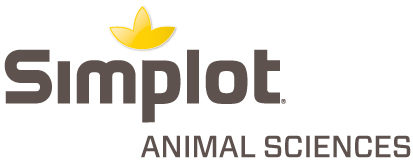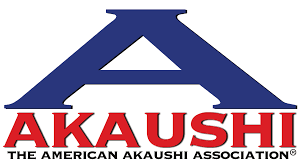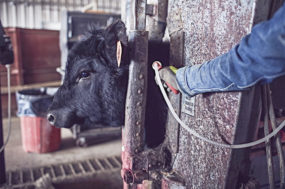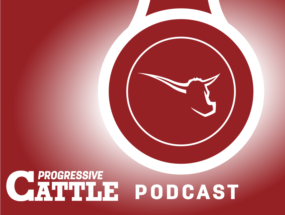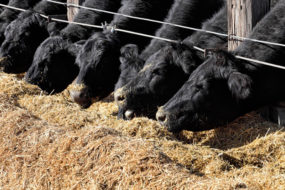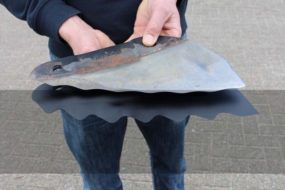The dairy industry continues to charge full steam ahead in producing more calves that are sired by beef bulls. These calves are commonly referred to as beef crosses, beef-on-dairies, beef X’s and other terms. The number of straws of beef semen sold into the dairy industry has more than doubled in the past five years, reaching more than 5 million units annually. Keep in mind that the number of dairy cows has been relatively stagnant for quite some time. This begs the question: What changed?
Quite simply, those beef crosses are a hot commodity in the feedlot industry because they perform better in the feedlot and on the rail. The result is: Dairies realize big premiums for their beef cross calves as compared to a straight dairy-bred steer. This article explores the challenges of nutritional and industry systems when dealing with beef cross calves and the advantages to the industry by dairies incorporating beef genetics.
The nature of raising calves from dairies is challenging
Dairy and beef cross calves present unique challenges in raising as compared to beef cattle. Beef calves have the advantage of being raised by the cow up-front, where milk is provided by the cow, and that essentially meets all the calf’s nutritional needs. As the beef calf gets older, it will start to eat forage alongside its mother and, later on, maybe a little creep feed if offered. In this system, there is adequate time for the rumen to develop and the calf to turn into a functioning ruminant. As long as the cow’s nutrition is adequate, the beef calf is never shorted and is set up very well to go on to the next stage of production.
In contrast to beef calves, dairy calves are removed from the cow immediately after birth. All nutrition is then provided by the farm or calf raiser. Milk replacer is the first feed to start. However, it is generally quite expensive. Efforts are made to get calves to start eating a grain mix as soon as possible to help reduce costs. This is where dairy-beef cross calves have a big challenge. At this early stage in life, the rumen is not developed, but we require the calves to eat a very energy-dense diet. There is little room for roughage in the ration. The calves’ low feed intake per day prohibits much roughage from being included. Additionally, most feeding systems are automated and/or take a lot of manual labor, further limiting the amount of roughage that can be included in these diets. These energy-dense diets will be able to meet the nutritional requirements of the calves but have long-term implications when it comes to rumen development.
The paradigm shift in ownership complicates an already complex system
Before the large-scale beef-on-dairy phenomenon occurred, few feeders made any effort to secure dairy calves before they were born or shortly afterward. That has changed dramatically in the past five years. It is now common for entities to try to not only own the calf from the day it’s born, but also provide the semen when the cow is bred with an agreement that the calf is owned by said entity the day it’s born. This paradigm shift in ownership has added to the complexity of raising a population of cattle that were already classified as high-risk.
It used to be the normal practice to have specialists raising dairy calves at different stages (hutches, growers and backgrounders) that had the needed facilities, labor and feedstuffs that would grow and prepare the calves for the next stage of production. There were still health challenges with these calves, but for the most part, dairy calves went through a system under the supervision of specialists who did a great job of being able to address their high-risk status.
The appeal to owning these calves through the whole production chain has led to a lot of beef cross calves being forced into existing production systems that commonly don’t have the labor, facilities or feedstuffs a traditional dairy calf would receive. Making calves fit into existing production systems can lead to higher morbidity (respiratory and digestive) and mortality, as well as cause additional throughput challenges at the packing plant. Oversimplifying things, dairy calves were raised under specialist systems, whereas a lot of beef cross calves are raised under generalized systems that feed calves from 300 pounds up to finish.
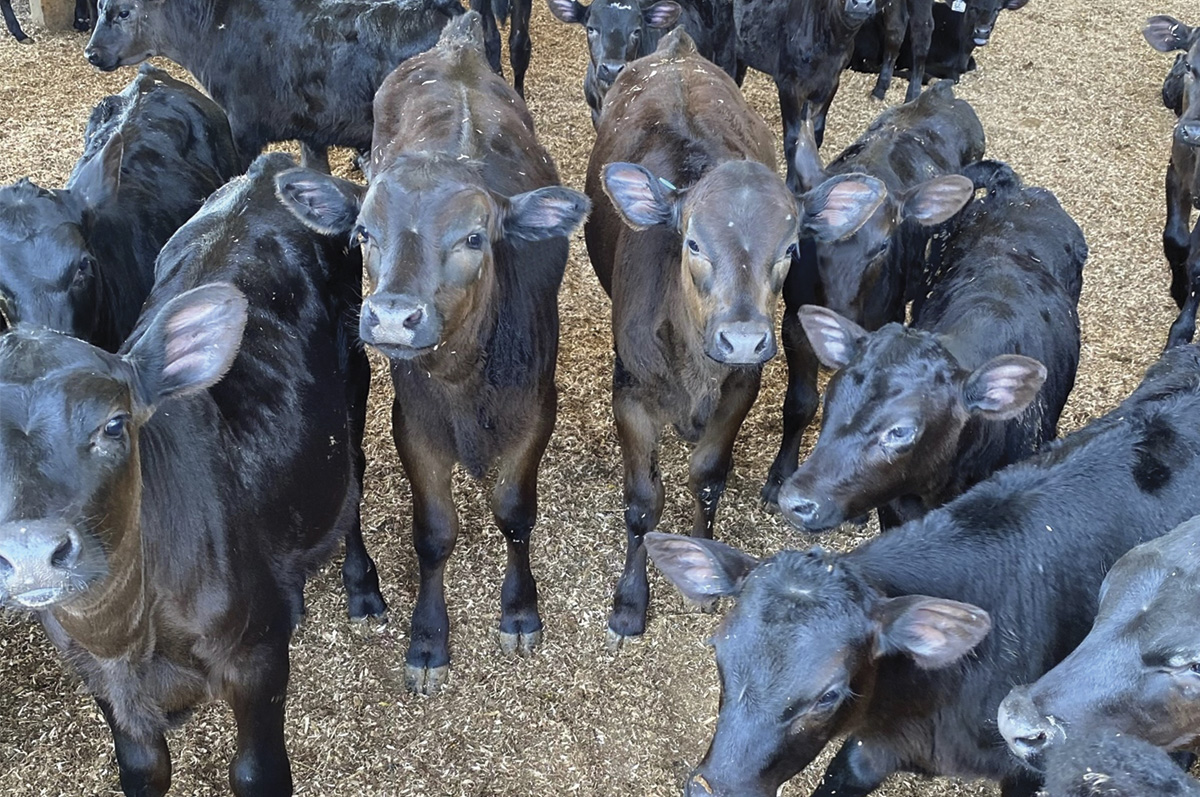
Raising young dairy-beef cross calves offers several challenges many in the beef industry had not had to consider before the spike in beef-on-dairy breeding in the past five years. Photo courtesy of Diamond V.
Yield and throughput are the drivers at the packing plant
Packers have been quite welcoming of the beef cross calves into the beef industry because they have some attributes that dairy cattle do not. First, most of the beef bulls being utilized are black-hided, and the resulting offspring are also black. A whole population of cattle that were previously ineligible now qualify for branded meat programs that reward premiums that have a black-hided specification.
Beef crosses will also typically have a 3% to 5% higher dress percentage (yield) than dairy cattle. This bump in yield has huge positive profitability implications for the packing plant. Just imagine if you had a dairy steer that yielded an 850-pound carcass off the kill floor. A beef cross that dresses 4% better would yield an 884-pound carcass. It takes the same amount of labor to harvest both animals. Now, just play that out. In a 150-head pen, that’s 5,100 more pounds of carcass weight (versus straight-bred dairy steers). If a plant harvests 5,000 head of beef crosses per week, that’s 170,000 more pounds of carcass – roughly 8 million more pounds – for the year. It took no more labor, and the plant has a lot more product for sale. It’s easy to see why yield is such a driver of plant profitability.
On the flip slide, it has been well documented, especially by Ty Lawrence’s group at West Texas A&M University, that the incidents of liver abscess in these beef crosses on the kill floor is much higher than that of traditional dairy steers. It has been recently reported that some of these beef cross pens are experiencing close to 80% liver abscesses. There are two problems with this. First, the presence of a liver abscess will lead to the liver being condemned. The severity of the abscess could also result in parts of the viscera or the whole viscera, in addition to other body parts, to also being condemned. Even though producers aren’t normally paid for the liver or viscera, the packer is dependent on merchandising them. Secondly, if a liver abscess is open or bursts on the kill floor, it results in the chain stopping and production coming to a halt while it is cleaned and equipment is sanitized.
We already talked about carcass yield, but packers also pay close attention to their production yield measured by the hour or the shift. When pens of cattle have very high incidents of liver abscesses, the packer’s production yield will fall quickly. Just think of all the people standing around doing nothing when the chain stops. Chain stoppage is estimated to cost about $3,000 per minute. This is why there has been so much renewed interest in understanding the etiology of liver abscesses. Pens of beef crosses seem to be the usual culprit in having very high incidents of liver abscesses that are ultimately costly on kill floor yield. It’s been costly enough that some packers have issued guidance that they would discontinue harvesting them, and beef crosses would lose market access if the problem did not improve.
Do beef crosses provide advantages in the cooler beyond yield?
Carcasses from dairy steers have not only traditionally given up yield off the kill floor, but they also often received additional trimming throughout the plant because the carcass was too long and dragged on the floor. This results in more yield loss, exacerbating an already low yield. It might be common when a person hears of “heavy” cattle being discounted that they think of just a large carcass weight. However, some studies indicate that the hip height of the cattle was a better predictor of carcasses dragging than carcass weight. This is the basis of the rule some packers had implemented limiting cattle to a 58-inch hip height.
Initially, the large numbers of beef crosses eased this problem compared to straight dairy cattle. Beef crosses not only improved dressing percentage yield from being heavier-muscled and fatter, but they also reduced trimming loss because the cattle were shorter, and their carcasses were less likely to drag in the packing plant. While this may have been the case initially, the problem has reemerged due to multiple factors.
When breeding beef bulls to the dairy herd started to build steam, most beef bulls that were available to be used still had selection pressure applied for maternal traits. This makes sense, as their daughters would become replacement females for beef producers. One could find terminally oriented beef bulls, but very few bulls were bred completely terminal. In fact, the demand for beef semen from the dairy industry grew so quickly that semen companies sold out of the bulk of their semen for certain breeds where the majority of the breed’s selection pressure focused on maternal traits. Hence, it’s easy to see why initially these beef bulls took some growth and frame out of dairy cows and the resulting offspring compared to straight-bred dairy steers.
Very quickly, though, companies started to develop nucleus herds that were very terminally focused to produce bulls for the beef cross market. That has resulted in offspring with increased frames as well as cattle simply being able to be fed to heavier finished weights. To compound this, two events in recent years led to the feedlot industry having much longer days on feed for cattle. The first was the packing plant fire outside Holcomb, Kansas, in 2019. It was followed shortly by the COVID-19 pandemic in 2020. As cattle were backed up, carcass weights increased by more than 20 pounds per year for two consecutive years (four to five times the average annual increase in carcass weights per year). As we become more current as an industry, and carcass weight continues to decrease year over year to a more normal trendline, time will tell if carcass length will be a lingering issue going forward.



